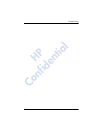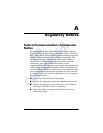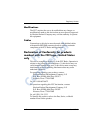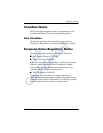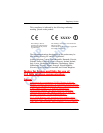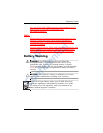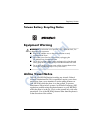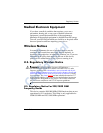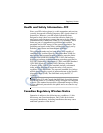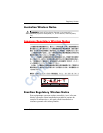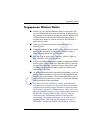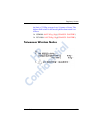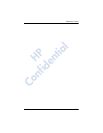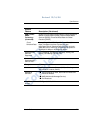
A–8 User’s Guide
Regulatory Notices
Health and Safety Information—FCC
Since your HP wireless phone is a radio transmitter and receiver,
you may be exposed to Radio Frequency (RF) signals when it is
powered on. However, your HP wireless phone has been
designed so that it does not exceed the emission limits for
exposure to radio frequency energy that are set by the Federal
Communications Commission of the U.S. Government. These
limits are part of comprehensive guidelines and establish
permitted levels of RF energy for the general population. The
guidelines are based on the safety standards previously set by
both the United States and international standards:
This equipment under test has been shown to be capable of
compliance for localized Specific Absorption Rate (SAR) for
uncontrolled environment/general population exposure limits
specified in ANSI/IEEE Standard C95.1-1992 and had been
tested in accordance with measurement procedures specified in
FCC/OET Bulletin 65 Supplement C (2001) and IEEE Standard
1528-200X (Draft 6.5, January 2002). Ministry of Health
(Canada), Safety Code 6. The standards include a substantial
safety margin designed to assure the safety of all persons,
regardless of age and health. The exposure standard for wireless
mobile phones employs a unit of measure known as the Specific
Absorption Rate (SAR). The SAR limit set by the FCC is
1.6W/kg.
NOTE: In the U.S. and Canada, the SAR limit for mobile phones
used by the public is 1.6 watts/kg (W/kg) averaged over one gram
of tissue. The standard incorporates a substantial margin of safety
to give additional protection to the public and to account for any
variations.
Canadian Regulatory Wireless Notice
Operation is subject to the following two conditions: (1) this
device may not cause interference, and (2) this device must
accept any interference, including interference that may cause
undesired operation of the device.
HP
Confidential



